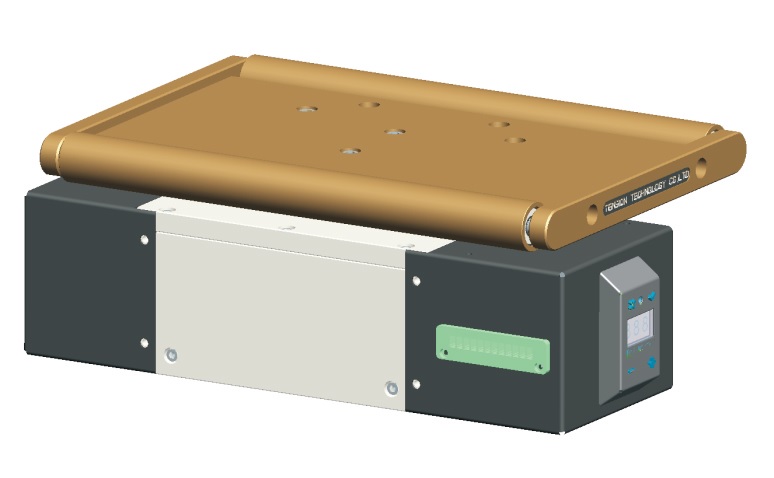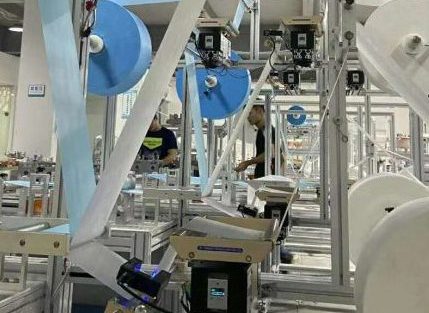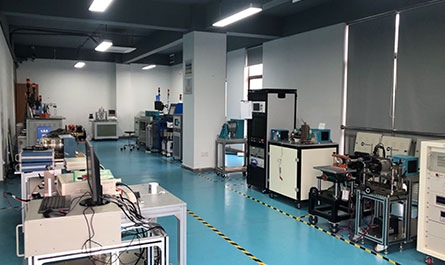🚀 Powering Precision Unlocking the Future of Motor Testing with Hysteresis Innovations 🛠️
In the fast-evolving world of industrial automation and electric mobility, precision isn’t just a goal—it’s a necessity. Whether you’re designing the next generation of electric vehicles, optimizing industrial machinery, or pushing the boundaries of renewable energy systems, the tools you use to test and validate motor performance can make or break your success. Enter the unsung heroes of motor testing: **hysteresis brakes**, **hysteresis dynamometers**, **hysteresis clutches**, and advanced **motor test systems**. Let’s dive into how these technologies are reshaping industries—and why your next project deserves their unmatched accuracy.  —– ### 🌟 The Science Behind Hysteresis: Where Magic Meets Mechanics At the heart of hysteresis-based systems lies a simple yet revolutionary principle: the power of magnetic hysteresis. Unlike traditional friction-based systems, hysteresis devices operate without physical contact, using magnetic fields to generate precise torque and resistance. This eliminates wear and tear, reduces maintenance costs, and ensures consistent performance over time. Imagine testing a high-performance electric motor for an electric aircraft. With a **hysteresis dynamometer**, engineers can simulate real-world loads with zero mechanical degradation, capturing data on efficiency, thermal behavior, and power output down to the millisecond. No slippage. No guesswork. Just pure, repeatable precision. —–
—– ### 🌟 The Science Behind Hysteresis: Where Magic Meets Mechanics At the heart of hysteresis-based systems lies a simple yet revolutionary principle: the power of magnetic hysteresis. Unlike traditional friction-based systems, hysteresis devices operate without physical contact, using magnetic fields to generate precise torque and resistance. This eliminates wear and tear, reduces maintenance costs, and ensures consistent performance over time. Imagine testing a high-performance electric motor for an electric aircraft. With a **hysteresis dynamometer**, engineers can simulate real-world loads with zero mechanical degradation, capturing data on efficiency, thermal behavior, and power output down to the millisecond. No slippage. No guesswork. Just pure, repeatable precision. —–  ### 🏭 Industrial Applications: From Labs to Production Floors 1. ** Wire Rewinding ** 🚗⚡ The race to dominate the EV market hinges on motor efficiency. Hysteresis dynamometers enable automakers to test motors under extreme conditions—think sub-zero temperatures or scorching desert heat—without risking hardware damage. By replicating dynamic driving cycles, these systems help refine regenerative braking, battery management, and torque delivery. 2. **Aerospace Innovation** ✈️🔧 When every gram matters, hysteresis clutches provide featherlight solutions for actuation systems in aircraft. Their non-contact design ensures reliability in critical applications like flight control surfaces, where failure isn’t an option. 3. **Renewable Energy Systems** 🌍💨 Wind turbines and hydroelectric generators demand rigorous testing to withstand decades of operation. Motor test equipment equipped with hysteresis brakes can simulate decades of wear in a controlled lab environment, identifying potential flaws before deployment. —– ### 🔬 Why Hysteresis Outperforms Traditional Alternatives Let’s get technical—but only for a moment. Traditional eddy current dynamometers and powder brakes have their merits, but they fall short in three key areas: – **Consistency**: Physical contact in friction-based systems leads to variability. Hysteresis devices? They’re as reliable as gravity. – **Durability**: No rubbing parts mean no replacement costs. One aerospace client reported a 70% reduction in maintenance spend after switching to hysteresis clutches. – **Silent Operation**: Perfect for noise-sensitive environments like medical device testing labs. Still not convinced? Consider this: A leading drone manufacturer reduced motor calibration time by 40% using a hysteresis-based motor test system, accelerating their product launch cycle. —– ### 📊 Case Study: Revolutionizing HVAC Efficiency A global HVAC manufacturer faced a challenge: Their new line of energy-efficient motors kept failing field tests due to overheating. Enter a customized **motor test system** with integrated hysteresis brakes. By replicating real-world load profiles—including sudden voltage dips and prolonged high-torque demands—the team identified a flawed cooling design within weeks. The result? A 22% boost in energy efficiency and a product line that now dominates the market. —– ### 🛠️ Building Tomorrow’s Test Labs: What to Look For Not all motor test equipment is created equal. When evaluating systems, prioritize: – **Modularity**: Can the system adapt to future technologies, like hydrogen fuel cell motors or AI-driven diagnostics? – **Software Integration**: Look for platforms that pair hardware with intuitive analytics tools. Real-time data visualization is non-negotiable. – **Scalability**: From benchtop units for R\u0026D to full-scale dynamometers for production lines, flexibility is key. A recent adopter in the robotics sector praised their hysteresis dynamometer’s plug-and-play compatibility with Python-based scripting, allowing custom test algorithms without vendor lock-in. —– ### 🤝 The Human Factor: Engineers Behind the Innovation Behind every hysteresis device is a team of engineers who’ve spent decades refining magnetic alloys and control algorithms. Take Dr. Elena Márquez, a materials scientist who pioneered a hysteresis brake coating that withstands 500°C temperatures. “It’s not just about numbers,” she says. “It’s about giving innovators the confidence to push limits.” This human-centric ethos extends to customer support. One automotive startup shared how a vendor’s engineers helped them redesign their test protocols remotely during the pandemic—cutting downtime by three months. —– ### 🔮 The Future Is Frictionless As industries pivot toward sustainability and smart manufacturing, hysteresis technology is poised to lead. Emerging trends include: – **AI-Driven Predictive Maintenance**: Integrating hysteresis dynamometers with machine learning to forecast motor failures before they occur. – **Miniaturization**: Ultra-compact hysteresis clutches for wearable robotics and micro-mobility devices. – **Green Certification**: Testing systems that measure carbon footprint metrics alongside performance data. A solar farm operator recently leveraged these advancements, using motor test equipment to validate a new generation of solar trackers—resulting in a 15% increase in energy harvest. —– ### 🚨 Don’t Get Left in the Dust In a world where milliseconds and microns separate leaders from laggards, settling for outdated testing methods isn’t just risky—it’s obsolete. Whether you’re fine-tuning a servo motor for a surgical robot or stress-testing a hypercar’s drivetrain, hysteresis-based systems offer the precision, reliability, and scalability to future-proof your operations. The question isn’t “Can we afford to upgrade?” It’s “Can we afford not to?”
### 🏭 Industrial Applications: From Labs to Production Floors 1. ** Wire Rewinding ** 🚗⚡ The race to dominate the EV market hinges on motor efficiency. Hysteresis dynamometers enable automakers to test motors under extreme conditions—think sub-zero temperatures or scorching desert heat—without risking hardware damage. By replicating dynamic driving cycles, these systems help refine regenerative braking, battery management, and torque delivery. 2. **Aerospace Innovation** ✈️🔧 When every gram matters, hysteresis clutches provide featherlight solutions for actuation systems in aircraft. Their non-contact design ensures reliability in critical applications like flight control surfaces, where failure isn’t an option. 3. **Renewable Energy Systems** 🌍💨 Wind turbines and hydroelectric generators demand rigorous testing to withstand decades of operation. Motor test equipment equipped with hysteresis brakes can simulate decades of wear in a controlled lab environment, identifying potential flaws before deployment. —– ### 🔬 Why Hysteresis Outperforms Traditional Alternatives Let’s get technical—but only for a moment. Traditional eddy current dynamometers and powder brakes have their merits, but they fall short in three key areas: – **Consistency**: Physical contact in friction-based systems leads to variability. Hysteresis devices? They’re as reliable as gravity. – **Durability**: No rubbing parts mean no replacement costs. One aerospace client reported a 70% reduction in maintenance spend after switching to hysteresis clutches. – **Silent Operation**: Perfect for noise-sensitive environments like medical device testing labs. Still not convinced? Consider this: A leading drone manufacturer reduced motor calibration time by 40% using a hysteresis-based motor test system, accelerating their product launch cycle. —– ### 📊 Case Study: Revolutionizing HVAC Efficiency A global HVAC manufacturer faced a challenge: Their new line of energy-efficient motors kept failing field tests due to overheating. Enter a customized **motor test system** with integrated hysteresis brakes. By replicating real-world load profiles—including sudden voltage dips and prolonged high-torque demands—the team identified a flawed cooling design within weeks. The result? A 22% boost in energy efficiency and a product line that now dominates the market. —– ### 🛠️ Building Tomorrow’s Test Labs: What to Look For Not all motor test equipment is created equal. When evaluating systems, prioritize: – **Modularity**: Can the system adapt to future technologies, like hydrogen fuel cell motors or AI-driven diagnostics? – **Software Integration**: Look for platforms that pair hardware with intuitive analytics tools. Real-time data visualization is non-negotiable. – **Scalability**: From benchtop units for R\u0026D to full-scale dynamometers for production lines, flexibility is key. A recent adopter in the robotics sector praised their hysteresis dynamometer’s plug-and-play compatibility with Python-based scripting, allowing custom test algorithms without vendor lock-in. —– ### 🤝 The Human Factor: Engineers Behind the Innovation Behind every hysteresis device is a team of engineers who’ve spent decades refining magnetic alloys and control algorithms. Take Dr. Elena Márquez, a materials scientist who pioneered a hysteresis brake coating that withstands 500°C temperatures. “It’s not just about numbers,” she says. “It’s about giving innovators the confidence to push limits.” This human-centric ethos extends to customer support. One automotive startup shared how a vendor’s engineers helped them redesign their test protocols remotely during the pandemic—cutting downtime by three months. —– ### 🔮 The Future Is Frictionless As industries pivot toward sustainability and smart manufacturing, hysteresis technology is poised to lead. Emerging trends include: – **AI-Driven Predictive Maintenance**: Integrating hysteresis dynamometers with machine learning to forecast motor failures before they occur. – **Miniaturization**: Ultra-compact hysteresis clutches for wearable robotics and micro-mobility devices. – **Green Certification**: Testing systems that measure carbon footprint metrics alongside performance data. A solar farm operator recently leveraged these advancements, using motor test equipment to validate a new generation of solar trackers—resulting in a 15% increase in energy harvest. —– ### 🚨 Don’t Get Left in the Dust In a world where milliseconds and microns separate leaders from laggards, settling for outdated testing methods isn’t just risky—it’s obsolete. Whether you’re fine-tuning a servo motor for a surgical robot or stress-testing a hypercar’s drivetrain, hysteresis-based systems offer the precision, reliability, and scalability to future-proof your operations. The question isn’t “Can we afford to upgrade?” It’s “Can we afford not to?”  —– Ready to redefine what’s possible? Your next breakthrough starts with the right tools. 💡🔋
—– Ready to redefine what’s possible? Your next breakthrough starts with the right tools. 💡🔋